
Palace Square - the main square of St. Petersburg, which is one of the attractions of the city, as well as a place of recreation and various holidays and events.
The square is included in the UNESCO World Heritage List.
The history of this place, as the origin of the square, originates together with the appearance of the Winter Palace. When in 1754, by order of the Empress Elizabeth Petrovna, the architect Francesco Bartolomeo Rastrelli planned not only the appearance of the palace itself, but also the idea arose to organize the space in front of the palace, creating a square.
Since then, the formation of the square began, which was later modified and supplemented with new architectural masterpieces.
During its history, the Palace Square has witnessed many events, including celebrations, parades, dramatic actions and revolutions.
In October 1918, the square was renamed Uritsky Square, in memory of one of the organizers of the storming of the Winter Palace during the revolution. After the blockade was broken in 1944, the square was returned to its historical name - "Palace".
Today, the Palace Square received its unsurpassed appearance in the period between the second half of the 18th and the first half of the 19th centuries. During this time, monumental luxury buildings were erected on the square, and the Alexander Column appeared, decorating the center of the square.

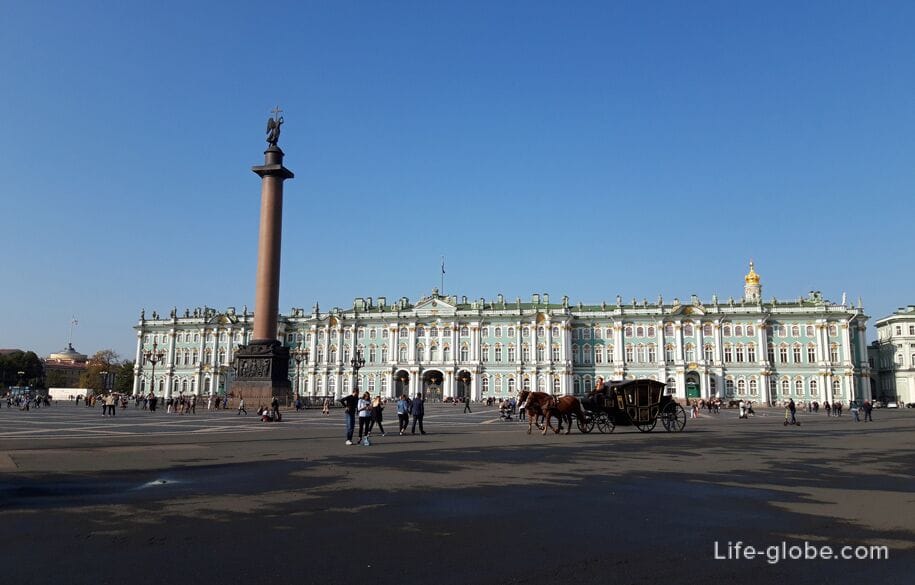


Palace Square is the heart of St. Petersburg-its historical center and is closed to traffic. Its size is about 5.4 hectares.
On New Year's Eve, the main Christmas tree of the city is installed on the square and festive festivities are held.
On the square, guests will find horse-drawn carriages, in which you can ride around the square (from 300 rubles a circle, at least 3 people) or ride around the city (from 600 rubles).
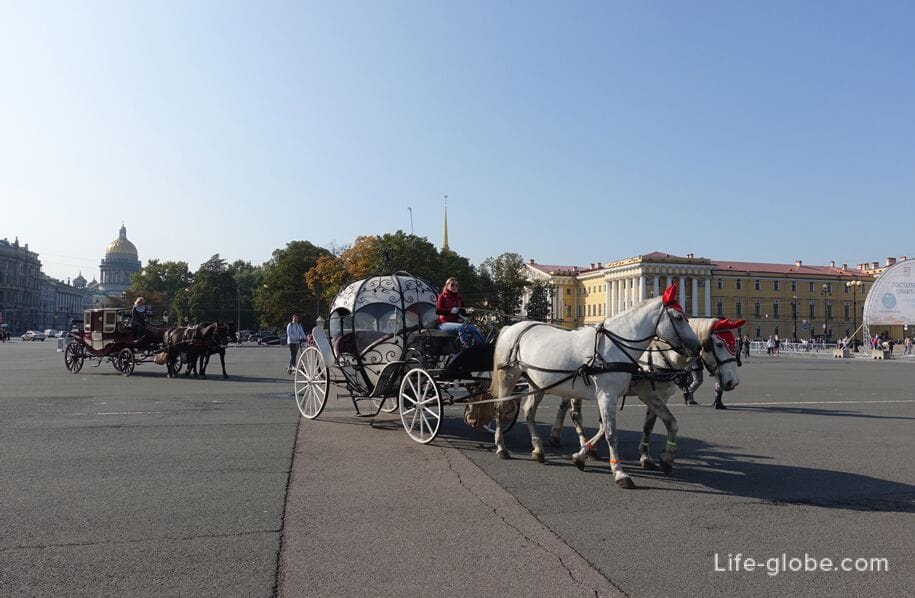
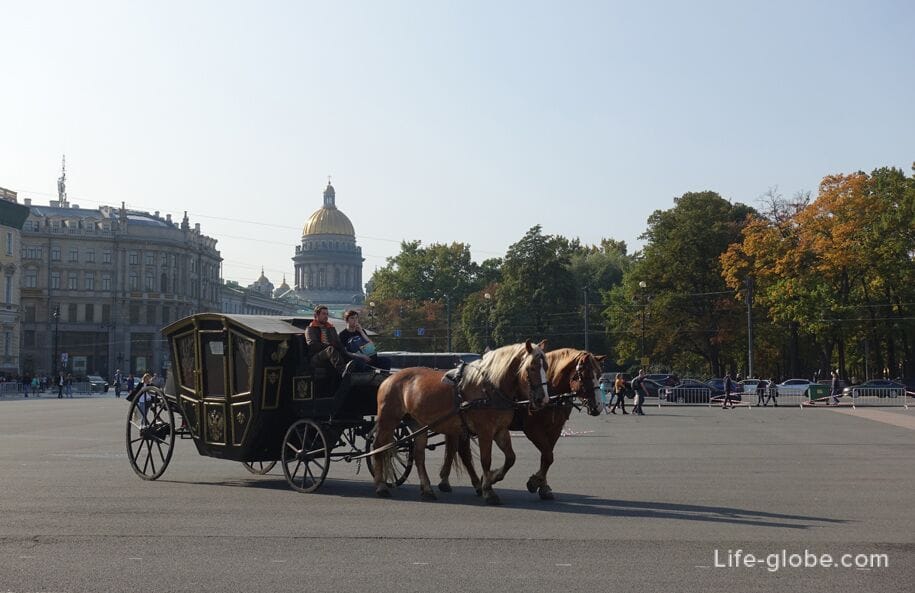
In the center of the square standsThe Alexander Column, which is a legendary monument and one of the unspoken symbols of St. Petersburg.
The column was built in the period from 1829 to 1834, by decree of Emperor Nicholas I, in memory of his older brother Alexander I, who defeated Napoleon.
The author of the project was the famous architect of French origin Auguste Montferrand.
The column is mounted on a large pedestal-a monolith, on which bas-relief slabs are reinforced. The bas-reliefs in allegorical form glorify the victory of Russian weapons and symbolize the courage of the Russian army.
The column itself consists of a hewn solid monolith and has a height of 25.6 meters. At the very top of the column is the figure of an angel with a cross. Learn more about the Alexander Column…

The buildings located around the Palace Square form the main and unified architectural ensemble of the city center.
The northern side of the square is occupied by the southern facade of the Winter Palace - a former imperial residence and a striking monument of the Baroque style.
The current building of the Winter Palace was built in 1754-1762.
For more than 150 years, the palace was the main ceremonial imperial residence of Russia.
Today, the Winter Palace is an outstanding architectural monument, and the main exposition of the State Hermitage Museum is located within its walls.
The facades of the Winter Palace are decorated with a two-tiered colonnade with capitals, numerous statues and vases on the roof. The abundance of stucco decorations made in the form of cornices and window frames, mascarons, cartouches and rocailles, torn pediments-give the overall appearance of the building a special splendor and grandeur. Read more about the Winter Palace (Hermitage)…
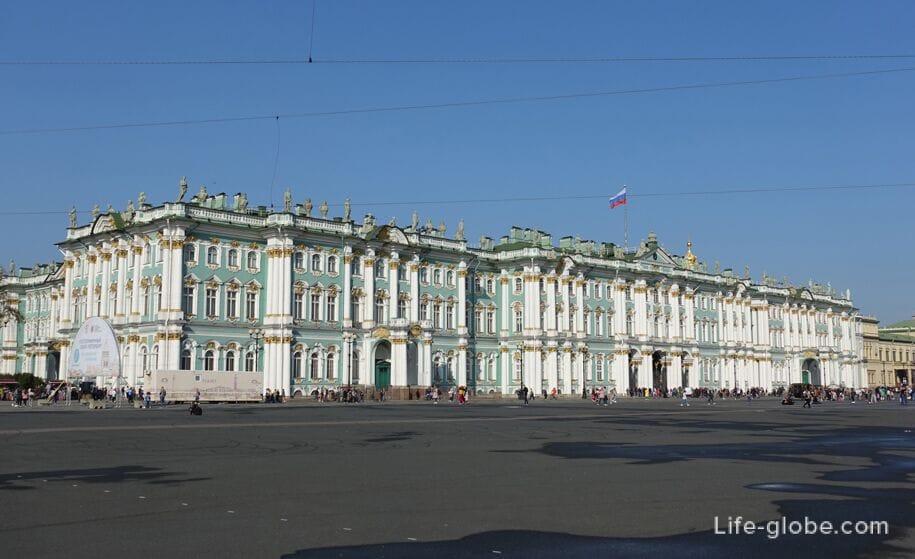
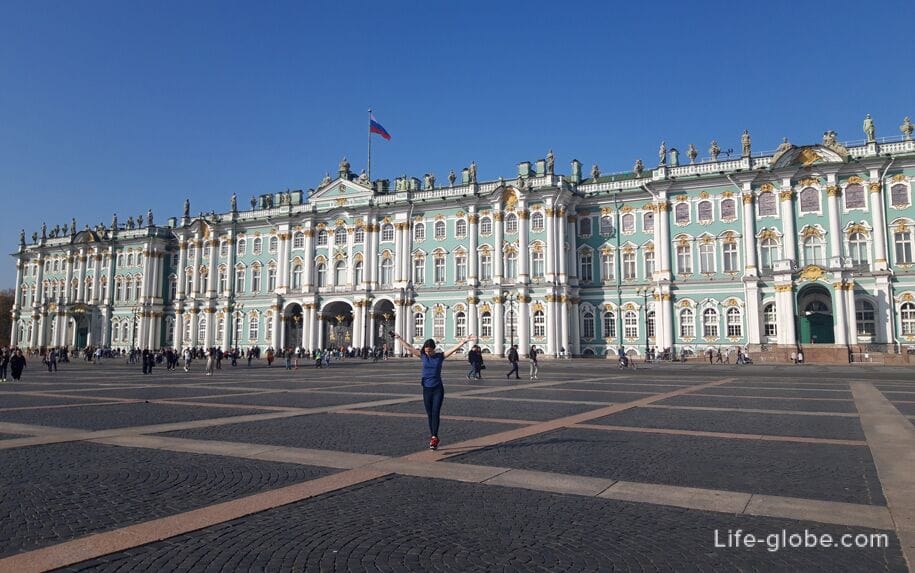
On the eastern side (Millionnaya Street), the Winter Palace is connected by covered archways to buildings that are also part of the State Hermitage Museum complex (The Small Hermitage, The New Hermitage, the Great Old Hermitage, the Winter Palace of Peter the Great and the Hermitage Theater).
View from Palace Square/Millionnaya Street on the arch-the transition from the Winter Palace (left) to the Small Hermitage (right)
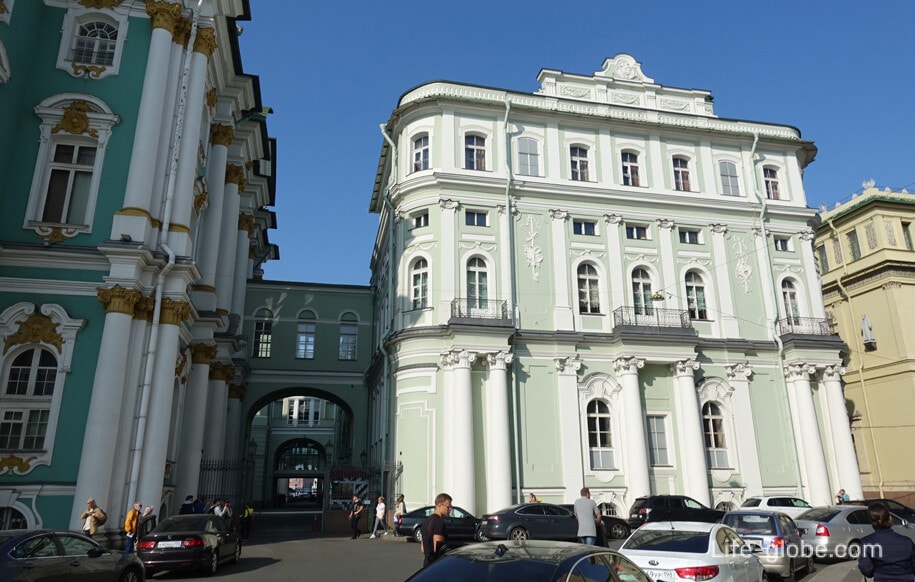
On the eastern side of the Palace Square is framed by the building of the former Headquarters of the Guards Corps, which was built in 1837-1843 in the late classical style by the architect and artist Alexander Pavlovich Bryullov.
The four-storey building looks classic and unobtrusive, but fits harmoniously into the overall appearance of the Palace Square.
The building is decorated with stucco patterns and a two-tier colonnade with capitals at the level of the 3rd and 4th floors.
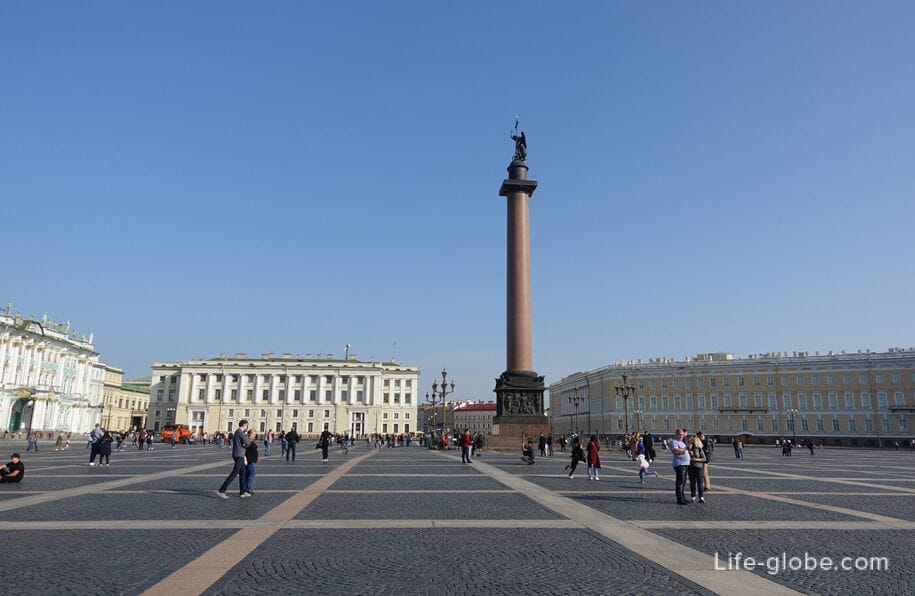
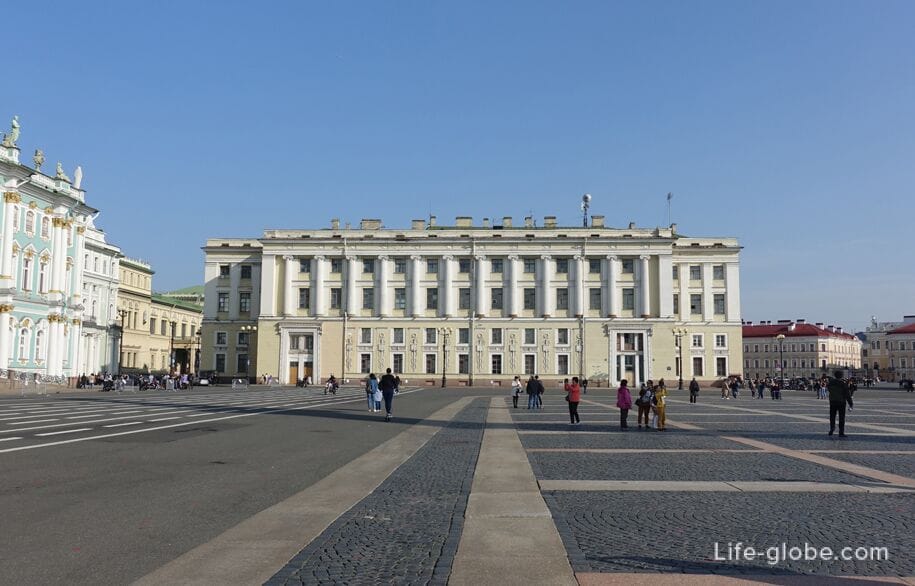
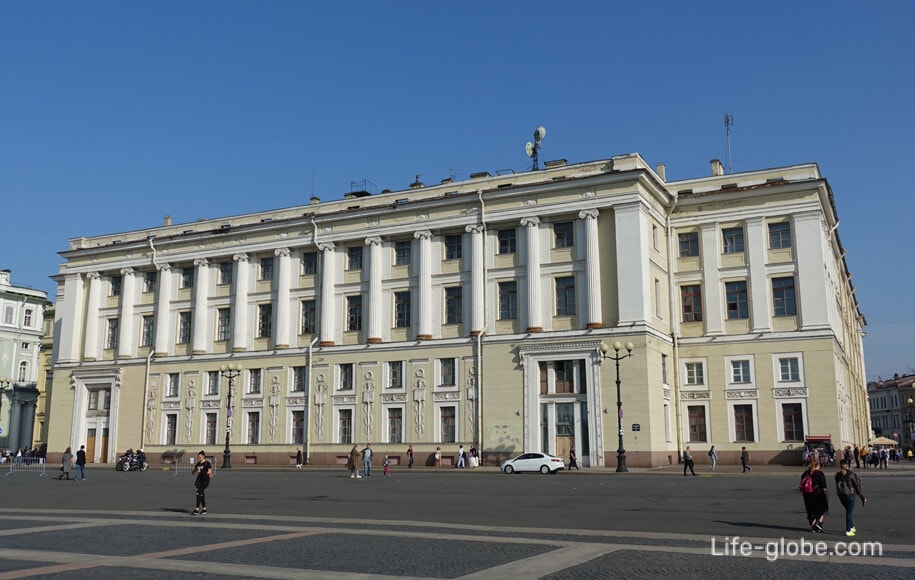
The southern side of the Palace Square is formed by the building of the General Staff, consisting of two buildings connected by a triumphal arch, crowned with the chariot of victory.
The building was built from 1819 to 1829, with the participation of architect Karl Ivanovich Rossi and sculptors S. S. Pimenov and V. I. Demut-Malinovsky.
The facades of the building facing the Palace Square are in the form of a semicircle, concave relative to the square, with architectural decorations.
The western part of the General Staff building now houses the command of the Western Military District of Russia. In the eastern part there are collections of the State Hermitage Museum.
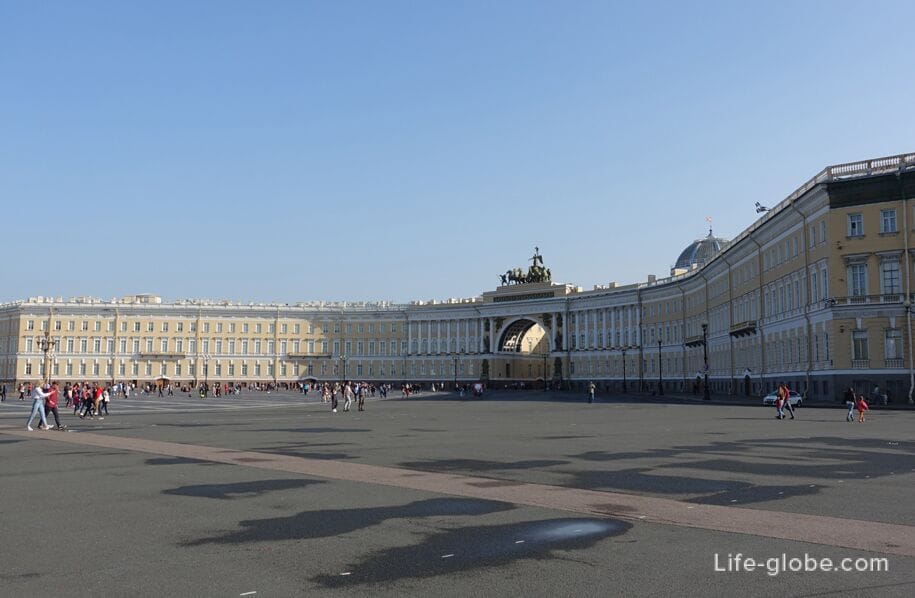
The central part of the General Staff building is formed by the arch of the General Staff, which is a separate symbolic architectural object.
The arch was built in 1826 as the main monument dedicated to the Patriotic War of 1812. The architect of the arch was Karl Rossi.
The upper part of the arch is decorated with a sculptural composition (a symbol of military glory) - a triumphal chariot drawn by six horses. The wild horses are held back on both sides by two warriors clad in Roman armor and armed with spears. In the cart is depicted, in a standing position, the winged Roman goddess of victory Victoria. Learn more about the building and the arches of the General Staff…
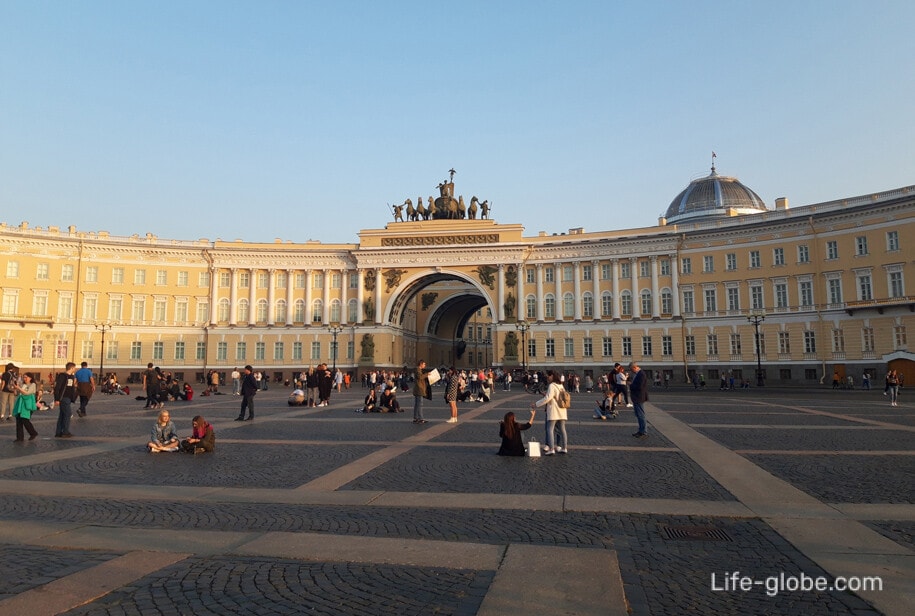
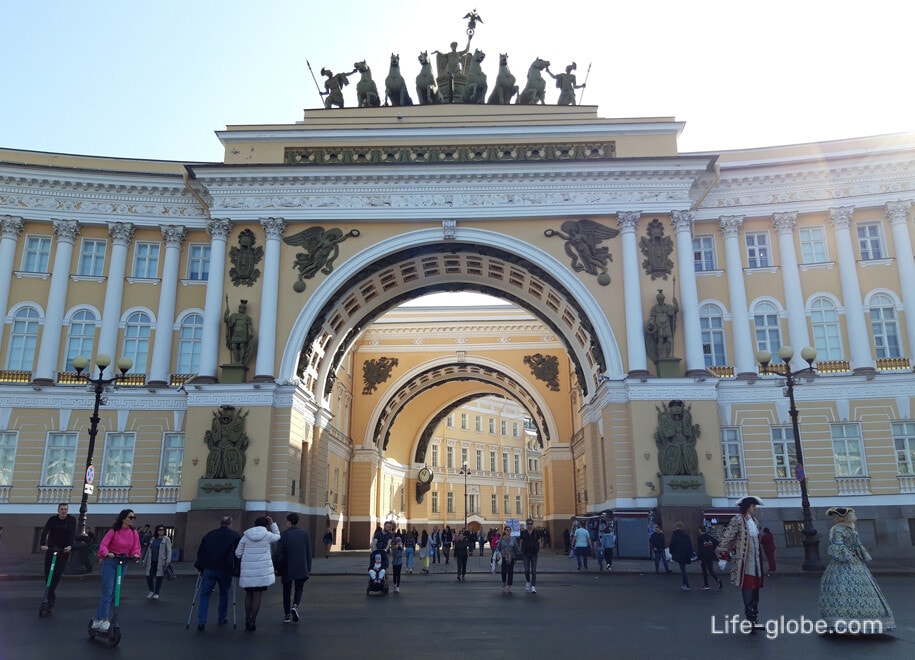
The west side of the Palace Square remains open and offers a good view of: the Admiralty Building, Alexander Garden and St. Isaac's Cathedral, around the drum of the dome of which there is a colonnade - a circular viewing platform that gives a magnificent 360-degree view of the central part of St. Petersburg.
View of the Admiralty from the Palace Square
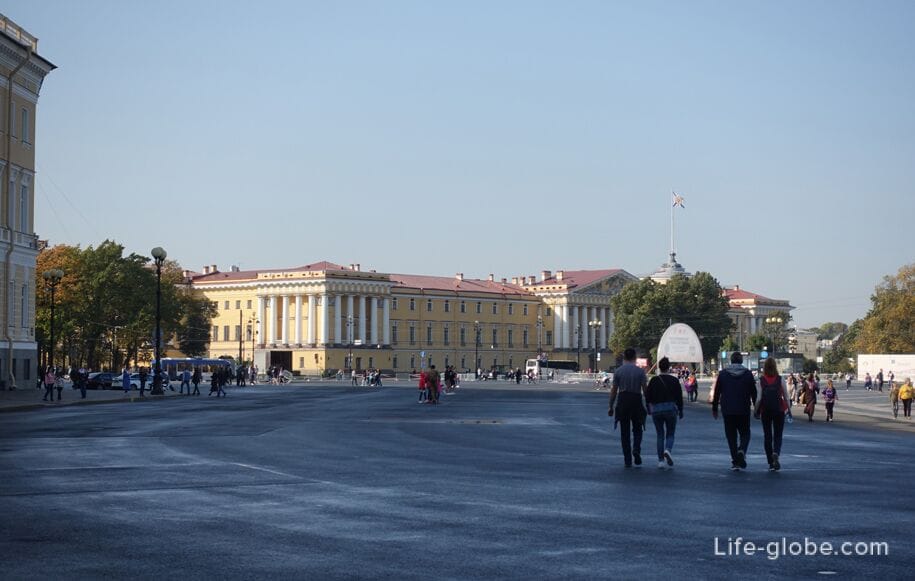
View from the Palace Square of the Admiralty (right), Alexander Garden (center) and St. Isaac's Cathedral (left)
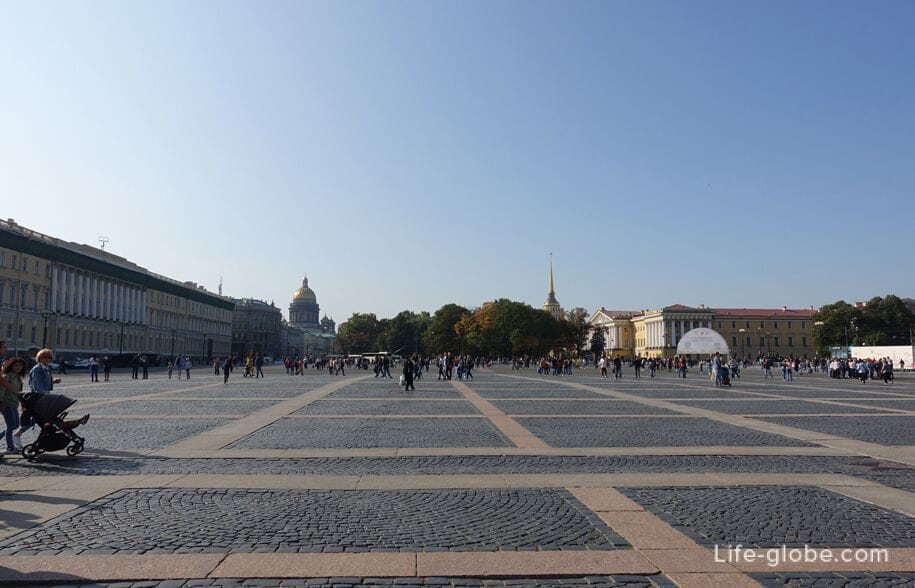
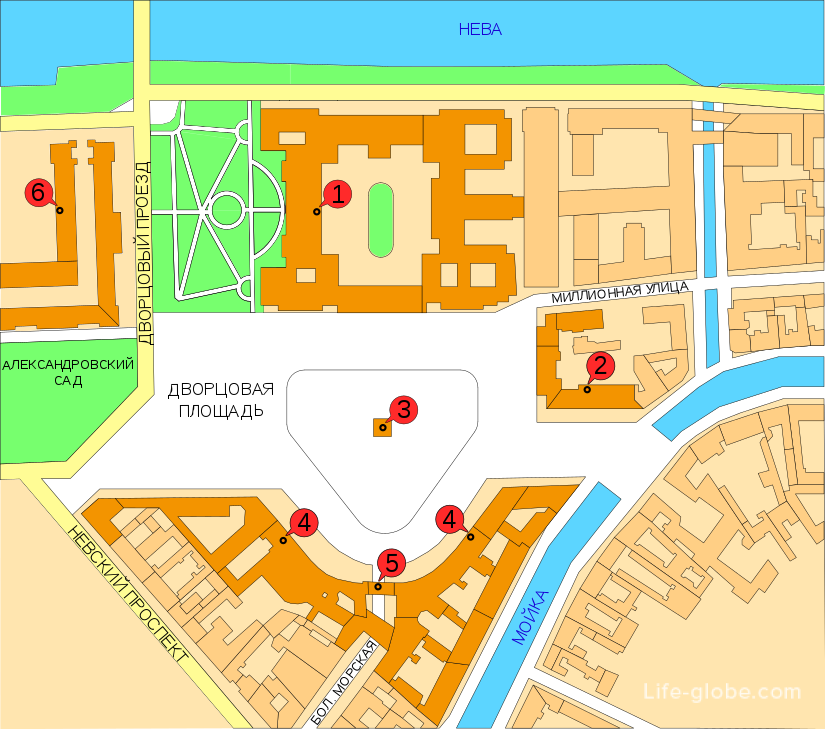
The nearest metrostations are : "Admiralteiskaya" (400 meters), "Nevsky Prospekt" (700 meters), "Gostiny Dvor" (1.2 kilometers).
Ground stop: "Palace Square" (450 meters). Buses: 7, 10, 24, 191, trolleybuses: 1, 7, 10, 11.
You can also visit the Palace Square with one of the excursions in St. Petersburg
Near the Palace Square, you can stop
The 5-star Kempinski Moika 22Hotel offers views of the Palace Square and the Hermitage.
The hotelfeatures a restaurant with panoramic city views, a bar, free Wi-Fi, a spa, a fitness center and facilities for disabled guests.
Each roomhere will provide you with a flat-screen TV, air conditioning, a minibar and a private bathroom with underfloor heating and toiletries.
Breakfast can be included in the room rate. Link to the hotel

This 4-star Petr Hotel features a restaurant, bar, lounge, tour desk, free Wi-Fi and a 24-hour front desk.
Each room here will provide you with a TV with satellite channels, air conditioning and a safety deposit box.
Breakfast can be included in the room rate. Link to the hotel
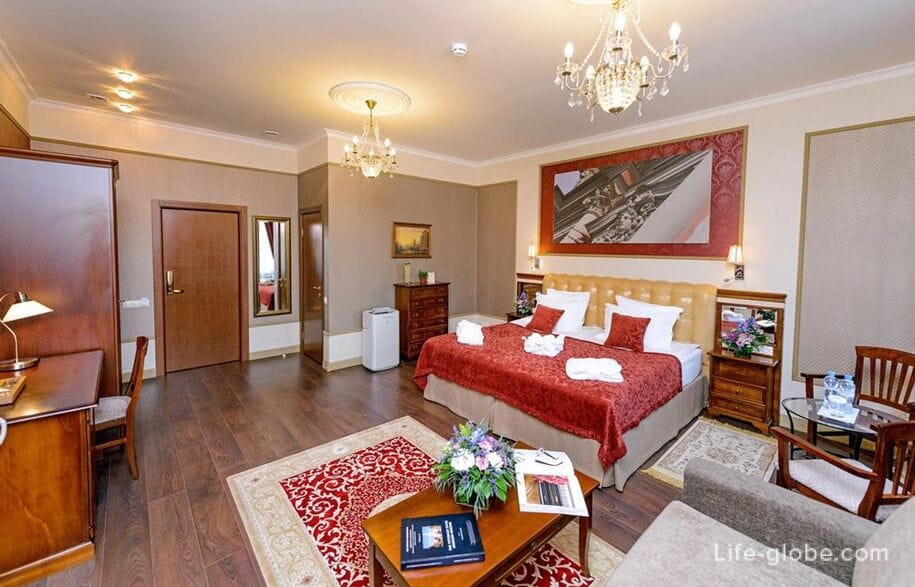
Featuring a garden, a bar, a spa and fitness centre, Victoria Bolshaya Morskaya 3-5 features a 24-hour front desk and free Wi-Fi.
All apartments at the hotel have a seating area, a dining area and a fully equipped kitchen with a microwave, refrigerator and stove. Link to the apart-hotel

Pinchapartments apartment on Malaya Morskayawith city views.
The apartmentfeatures 2 bedrooms, free Wi-Fi, heating, a seating area, a flat-screen TV, a washing machine, a kitchenette with a dishwasher and a microwave, and a bathroom with a bidet. Link to the apartment
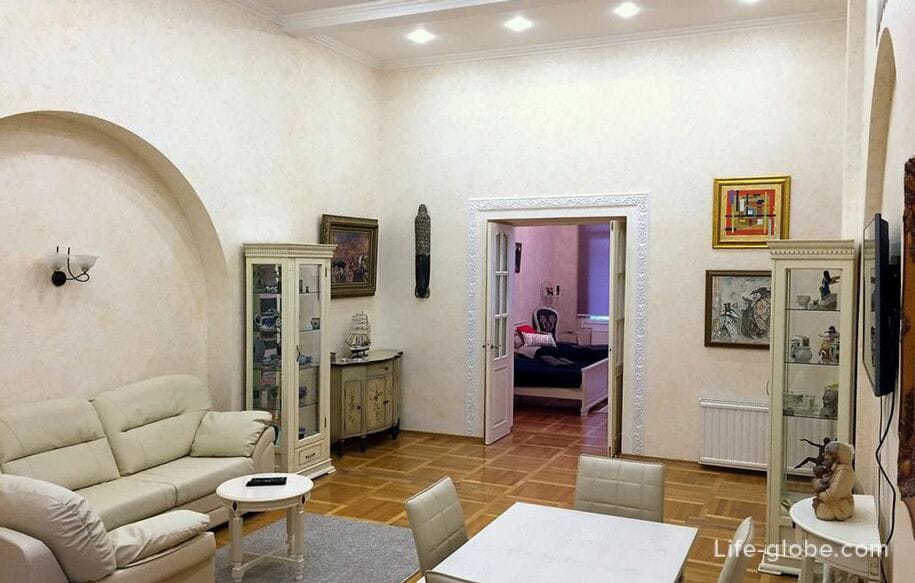
All accommodation facilities in St. Petersburg, including in the city center and near the Palace Square, can be viewed and booked here